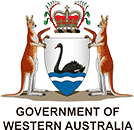Clarithromycin (AN) TM
You should seek medical advice in relation to medicines and use only as directed by a healthcare professional. Always read the label. If symptoms persist see your healthcare professional.
Active ingredients: clarithromycin
Pack: false
On 1 October 2025 Clarithromycin (AN) was not listed on the Australian Register of Therapeutic Goods (ARTG).
Healthdirect medicine data is refreshed once a month, see Data sources page. The medicine you searched for may have been added to the ARTG after this date.
Ask your pharmacist, doctor or health professional for advice, or search the ARTG.
Is this medicine available in Australia?
The ARTG is the register of all therapeutic goods that can be lawfully supplied in Australia. Sometimes a special provision is made to make available some medicines that are not listed in response to the needs of particular people or circumstances. To find out more check out the "Access to therapeutic goods not on the ARTG" section on the ARTG page.
Other medicines that contain: clarithromycin









